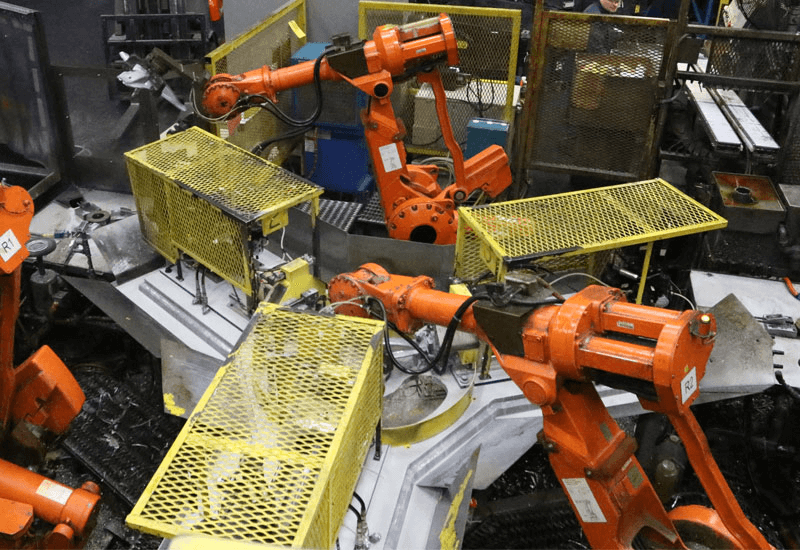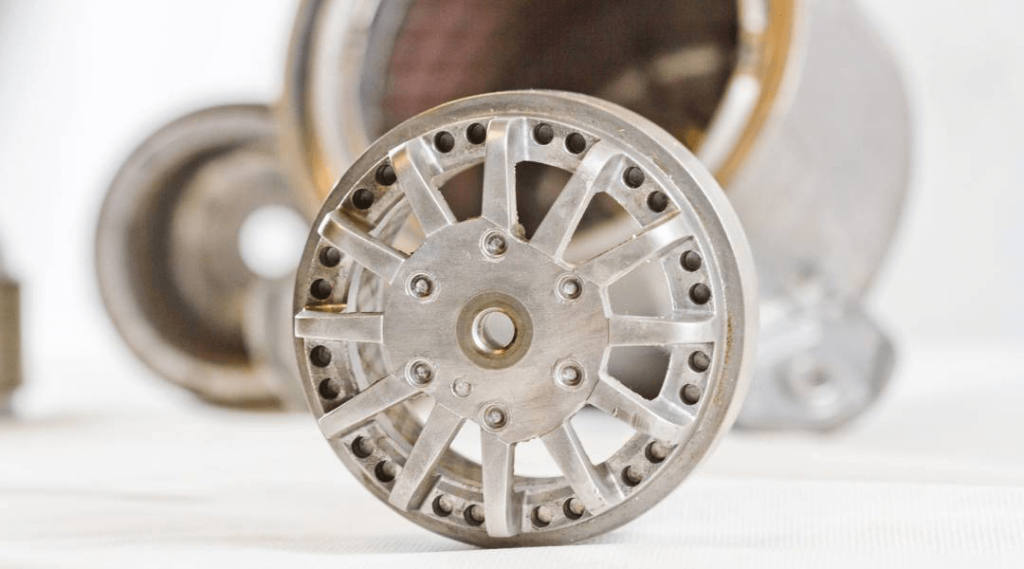Qu'est-ce que le moulage sous pression de l'aluminium: (les méthodes de moulage expliquées étape par étape?)
Qu'est-ce qu'un moulage sous pression en aluminium: (les méthodes de moulage sont expliquées étape par étape?)

Le moulage sous pression est en fait devenu une technique de fabrication très populaire pour couler les produits métalliques. Les fabricants utilisent à plusieurs reprises le moulage pour produire plusieurs tailles, épaisseurs et formes différentes d'aluminium moulé sous pression.
Moreover, they can produce different variety of shapes by using this process with perfect accuracy and fascination. Nowadays the process of Die Casting is rapidly using. It has several types according to the variations in the designing process which has used in specific conditions.
How does die casting process work?
Furthermore, this casting process is a best choice for bulk production. It can easily produce your metal parts in mass production with great speed. And these metal parts require less machining in post-production.
It has the following qualities like,
- highly conductive
- has ability to rapid production
- corrosion resistant
- consists of a good strength-to-weight ratio and stiffness
- it permits a great volume of die casting parts to produce rapidly.
Furthermore, it is very low-cost casting process in comparison to alternative processes. In this process, manufacturers melt the metals and then they produce the desire shapes of these metals.
Furthermore, today Aluminum Die Casting has become one the most economical and rapid forming processes. Because it is highly useful for creating components having uniform quality for a mass production.
It has the ability to produce hundreds of thousands of castings very quickly by using only one mold. In fact, it is very cost effective and its per unit cost is very low. It has now become the essential part of all the industries. Because it produces aluminum components not only for machines but also for sale or many other industrial and commercial production.
Other kinds of metals which Aluminum Die Casting involve
As we know that in Aluminum Die Casting, aluminum is the most important and basic metal. But it also involves many other non-ferrous metals. For example, in the die casting manufactures use 80% of aluminum with the combination of other alloys.
Moreover, there are many other alloys which they use in die casting. These are:
- Copper
- Magnesium
- Zinc
- Tin
- Lead
Additionally, all of these alloys have several different properties. And here are their melting points.
Alloys with high melting points are:
- aluminum 600°C
- magnesium 520°C
Alloys with low melting points are:
- zinc 380°C
- lead 320°C.
Which are 6 types of le moulage processes?
There are actually 6 types of Aluminum Die Casting processes which will immensely help in your mass production. In fact, all types of die casting processes have designed and variated with some specific goals according to needs. In fact, all types of die casting processes have designed and variated with some specific goals according to needs.
Furthermore, they all have the same goal to cast a mold by using the same injected molten metal. But by depending on the kind of,
- melted metal
- part size
- and part geometry
different processes have ability to deliver you supreme results in comparison to alternate methods. As we have already described that there are two basic kinds of Aluminum Die Casting process. These are;
- Cold chamber
- Hot chamber.
1. Hot Chamber Aluminum Die Casing:
This technique has several different names like, hot casting and gooseneck casting. Basically, this technique of die casting is most popular in comparison to cold and other die casting. This process comes with a cylinder chamber.
In addition, this cylinder chamber of the injection mechanism totally immerses in the bath of molten metal. A feed system of gooseneck metal then draws the liquid metal inside the die cavity. Moreover, Aluminum Die Casting contributes much higher yields the cold chamber process.
This process provides extra comfortable and fast mold injection in the molten bath. And hence it also provides greater corrosion sensitivity. So, this die casting technique is a perfect solution for those applications which makes use of metals of high fluidity and low melting points.
Suitable alloys or metals for hot casting process are
- magnesium
- copper
- lead
- Cold Chamber Die Casting:
In the injection system, the molten metal is hand-ladled or automatically. Hence, it totally eliminates the urgency of the injection mechanism to immerse into the melted metal.
So, for the immersion design of hot Aluminum Die Casting, the applications which are so corrosive, cold die casting will be an ideal alternate. Furthermore, all these applications involve those casting of metals which have high melting temperatures.
Suitable alloys or metals for hot casting process are
- Aluminum
- Aluminum alloys.
3. Low Pressure Aluminum Die Casting
Basically, this process of die casting is an ideal selection for those aluminum parts which are balance on all side of rotation of an axis. Moreover, vehicle wheels are the best example of it. Manufacturers often fabricate them by using low-pressure die casting.
This technique of Aluminum Die Casting, the mold locates vertically on the top of the bath of melted metal and it is connected through a riser tube. When manufacturers pressurize the chamber, it pulls the metal upward and into the mold. The temperature of pressurizing generally lies between 20 and 100kPa.
- Squeeze Die Casting
Fondamentalement, les fabricants avaient créé ce procédé de moulage sous pression pour trouver une solution réalisable pour couler des alliages et des métaux à faible fluidité. Ce processus de moulage sous pression fournit en fait des produits très denses.

De plus, c'est une technique complémentaire de moulage sous pression qui fait suite au traitement thermique. Les fabricants associent souvent ce processus à l'aluminium fondu. De plus, ils utilisent ce processus pour les applications qui nécessitent un renforcement des fibres.
- Moulage sous vide
Les fabricants utilisent généralement ce procédé de moulage sous pression d'aluminium pour les applications qui ont un traitement thermique après moulage. Il y a deux avantages de ce processus comme,
- il réduit la turbulence
- limite les inclusions de gaz.
Cette technique garantit une faible porosité du matériau et une résistance accrue.
- Moulage sous pression semi-solide
This die casting process actually provides maximum density and minimum porosity inside the casted material. it is also famous for another name like, Thixo-forming. Moreover, it provides an added benefit of best precision.
Suitable alloys or metals for hot casting process are
- Aluminum alloys
Conclusion:
Hence, le moulage process has ability to produce highly accurate components with perfection and perfect choice for bulk production. It also creates high-volume metal components for you mass production. Nowadays all manufacturing industries are relying on these die casting processes that we have described above.
Moreover, industries like, aerospace, auto and power tools are making use of these latest techniques to produce highly precision components. They are trusting these processes of die casting because they are,
- Highly reliable
- Provide high quality
- Rapid production for bulk production
- Minimal assembly
- Versatility in designs.



